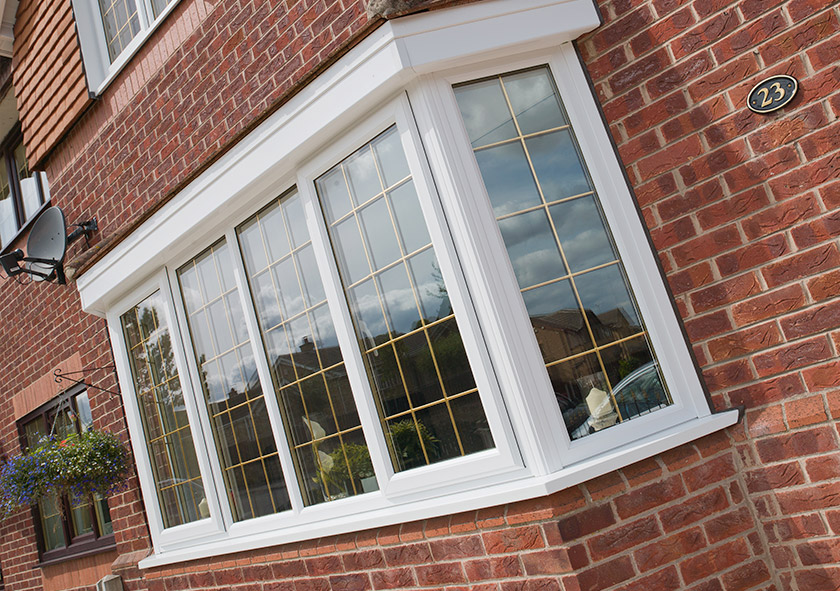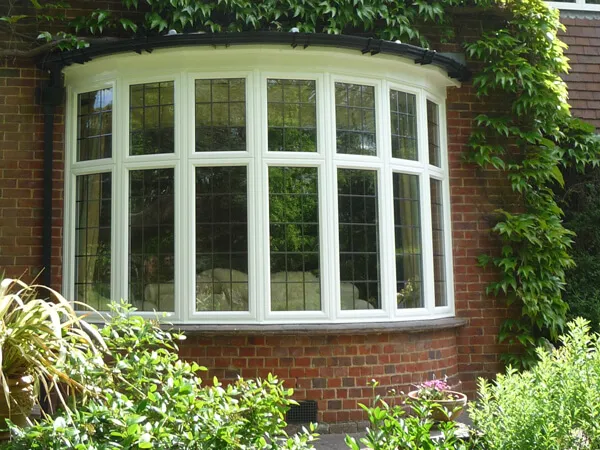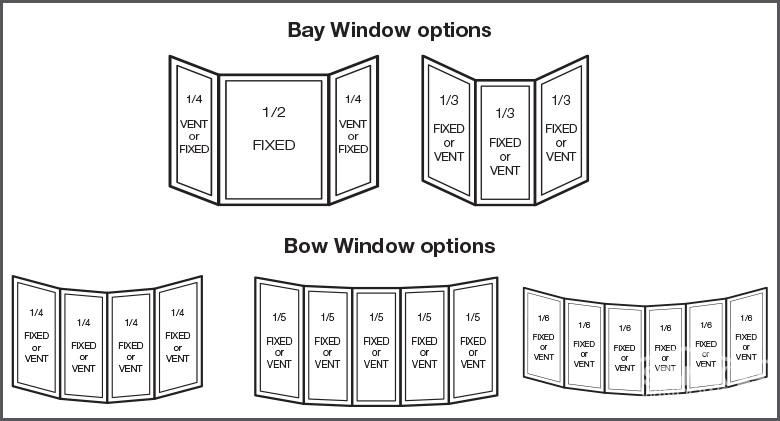Bay vs Bow Windows: Choosing the Best Window Style for Your Home
When selecting a window that can become a standout feature of your home, bay and bow windows are often at the top of the list. Both styles project outward, adding space, light, and architectural appeal. But though they share some traits, each style has unique strengths. In this article we compare bay and bow windows in detail, look at their benefits and downsides, and explain how to decide which best suits your home and lifestyle.

Bay Window Example

Bow Bay Example

Bay Window / Bow Bay Explanation
What Is a Bay Window?
A bay window typically consists of three window panels: a large fixed central pane with two smaller flanking windows set at angles. This configuration creates a bold, angular projection from the home’s wall and forms a defined bay space inside the room. Bay windows often include operable side sashes—casement or double‑hung—to provide ventilation :contentReference[oaicite:1]{index=1}.
Because the central pane is fixed and the sides open, bay windows offer a balanced mix of panoramic view and fresh air. They project further outward than bow windows, forming an inviting nook that is often used for seating, plants, or display space. This functional bay can also be tiled or cushioned for a cozy reading area.
What Is a Bow Window?
In contrast, a bow window comprises four to six equal‑sized panels arranged to create a gentle curve—a semicircular or segmental arch. These windows seldom open, and are usually fixed or partly operable casements :contentReference[oaicite:2]{index=2}.
A bow window adds elegance with its sweeping curve, capturing views across a wider field than a typical bay. Its shape brings in more natural light, given the larger glazed surface, and can create a bright, panoramic impression in a room. Bow windows extend outward, though generally less dramatically than bay windows.
Key Differences
Despite their similarities, the design and performance of bay and bow windows diverge significantly.
Number of panels: Bay windows have three; bow windows have four to six panels :contentReference[oaicite:3]{index=3}.
Appearance: Bay windows are angular and structured; bow windows are smoothly curved and soft.
Projection: Bay windows often project further, creating a deeper internal alcove; bow windows protrude less but spread wider, offering panoramic views :contentReference[oaicite:4]{index=4}.
Light and view: Bow windows typically allow more light and a wider view due to additional panels; bay windows offer a focused view and better airflow through opening sides :contentReference[oaicite:5]{index=5}.
Benefits of Bay Windows
Bay windows are a popular choice for many homes because they:
- Create a distinct architectural feature with bold angles.
- Include operable side windows for venting fresh air.
- Form a spacious interior bay suitable for seating, storage, or display.
- Tend to cost less and are easier to install than bow windows due to fewer panels and simpler structure :contentReference[oaicite:6]{index=6}.
Benefits of Bow Windows
Bow windows offer their own unique advantages:
- Provide a gentle curved facade that softens architectural lines.
- Let in more sunlight and let you enjoy broader external views.
- Work well in larger wall spaces or corner installations, wrapping around room edges for extended light :contentReference[oaicite:7]{index=7}.
- Offer an elegant aesthetic that can elevate the look of both traditional and modern homes.
Things to Consider
Cost: Bow windows usually cost more—often significantly—due to extra panels, complex structure, and installation needs. Estimates range from £1,500 to £6,500+ for bow windows versus £900 to £7,100 for bay windows in the US market :contentReference[oaicite:8]{index=8}.
Installation: Both require professional installation and structural support. Bay windows typically need support braces or cables; bow windows often need specialised framing and soffit work due to their curved geometry :contentReference[oaicite:9]{index=9}.
Space: Bay windows project further—ideal for creating seating space—but need generous exterior clearance. Bow windows need wider wall space (about 80 inches/2 m) but less depth :contentReference[oaicite:10]{index=10}.
Ventilation: Bay windows often ventilate better with side sashes; bow windows may be fixed or limited to two venting sections, reducing airflow unless designed otherwise :contentReference[oaicite:11]{index=11}.
Selecting the Best Style
So how do you decide which window style is best? Consider these key factors:
Former home style and architecture: Bay windows highlight bold, classic lines—ideal for cottage, Victorian, or Tudor homes. Bow windows enhance softer, elegant facades often seen in Georgian or modern homes.
Interior function: Choose bay windows for seating nooks or alcove projects. Choose bow windows for light‑filled spaces and panoramic views.
Wall clearance: Bay windows need more depth; bow windows need wider external wall span.
Budget: Bay windows are generally lighter on the wallet. Expect bow window costs to be 1.5 to 2.5 times higher due to complexity and extra components :contentReference[oaicite:12]{index=12}.
Ventilation: If fresh air is a priority, either choose a bay window or ensure your bow window includes some operable panes.
Making Your Decision
Choosing between bay and bow windows comes down to balancing style, light, space, function, and cost. Both styles add character and natural illumination to your home. Bay windows are great for cozy interior setups and airflow, while bow windows are ideal for elegance, panoramic view, and softer curved lines.
To ensure a successful installation:
- Measure available wall space and feel the exterior projection.
- Check planning permission rules—some bay or bow installations may need approval depending on location and protrusion.
- Choose materials that match your insulation needs and maintenance preferences—vinyl, wood, aluminium, or composite are common choices :contentReference[oaicite:13]{index=13}.
- Hire a reputable installer with experience in projecting window units and structural requirements.
Conclusion
Bay and bow windows are both architectural upgrades with strong visual appeal, added space, and fresh light. Bay windows offer angular charm, ventilation, and a defined interior bay. Bow windows bring sweeping views, generous light, and curved elegance. Your best choice depends on home style, available space, and budget. Whatever route you choose, professional installation and quality materials will ensure years of comfort and value.
If you want help choosing or installing your next projection window, contact a trusted glazing specialist. With expert advice, your new bay or bow window can become a lasting highlight of your home.













Great post! Glazing is such an important aspect of both aesthetics and energy efficiency in modern buildings. It’s amazing how the right glass choices can completely transform a space while also improving insulation and reducing noise. Thanks for sharing!